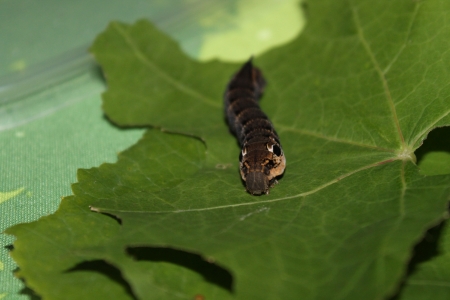Understanding Leaf Spot and Black Spot
If you’ve spent any time pottering about in a British garden, you’ve likely come across the familiar frustration of leaf spot and black spot. These two common plant diseases are more than just an eyesore; they can really put a damper on your gardening efforts if left unchecked. In simple terms, leaf spot and black spot are fungal infections that target the leaves of your plants, leaving behind unsightly blemishes and, if ignored, potentially weakening the entire plant.
Black spot, in particular, is notorious among rose growers across the UK, showing up as round, black blotches with fringed edges on the upper surfaces of leaves. Leaf spot, meanwhile, is a broader term covering a variety of fungi and bacteria that create brown or black spots scattered across different types of foliage. Our unpredictable weather—frequent rain, cool nights, and occasional muggy spells—creates ideal conditions for these diseases to thrive.
The real trouble starts when these spots cause leaves to yellow and drop prematurely. This weakens the plant over time, making it less resilient against other pests or the next cold snap. While roses are particularly at risk, don’t be fooled into thinking your other favourites—like hydrangeas, delphiniums or even your treasured fruit trees—are safe from harm. Recognising these problems early is key to keeping your garden looking its best through every season.
2. Early Warning Signs: What to Look Out For
When it comes to keeping your garden in top nick, being able to spot the early warning signs of leaf spot and black spot is half the battle won. Here in Britain, with our famously fickle weather – one minute a drizzle, next a burst of sunshine – conditions can easily swing in favour of these troublesome diseases. That’s why regular checks are a must, especially after a spell of rain or on those misty mornings when everything feels just that little bit damp underfoot.
Common Symptoms on Leaves
| Symptom | Description | Stage |
|---|---|---|
| Small Dark Spots | Tiny brown, black or purple spots appearing on upper leaf surfaces; often with yellow halos | Early |
| Yellowing Around Spots | The tissue around spots begins to turn yellow before the whole leaf is affected | Early to Mid |
| Irregular Blotches | Spots merge to form larger blotchy patches; may look water-soaked or slightly greasy | Mid |
| Premature Leaf Drop | Affected leaves may fall off before time, leaving plants looking sparse and unhappy | Advanced |
Subtle Changes Worth Noticing
- Dullness: Leaves lose their usual sheen and appear lacklustre.
- Curling Edges: Leaf edges might curl inwards, an early stress sign.
- Tiny Pinpricks: Some infections begin as minute pinprick lesions—easy to miss unless you’re up close.
- Peppered Appearance: A light peppering effect across several leaves could indicate spores are spreading.
Tips for Regular Checks in the British Climate
- Create a Routine: Take a weekly stroll round your garden beds, teacup in hand if you like—just keep an eye out for changes.
- Check After Rain: Fungal diseases thrive in dampness, so inspect plants after wet weather or heavy dew.
- Look Under Leaves: Don’t forget to check the undersides where some early symptoms lurk unnoticed.
- Corners and Shelter: Pay extra attention to sheltered spots and crowded plantings where air circulation is poor.
- Note Any Changes: Jot down anything unusual in a garden diary; this habit will help you catch trends before they become problems.
A Little Wisdom from Experience
If there’s one thing years of gardening in Britain has taught me, it’s never underestimate the power of vigilance. The smallest spot today can be tomorrow’s headache if ignored—so make those regular checks part of your gardening ritual, rain or shine.

3. Spotting Trouble: Real-Life Stories from the Allotment
If there’s one thing you learn quickly on a British allotment, it’s to trust your eyes and listen to the old hands. Margaret from Kent remembers her first encounter with black spot on her roses. “I thought the odd yellow leaf was nothing to worry about, but old Bill next door clocked it straight away—‘That’s the start of black spot, love,’ he said. ‘Best not ignore it.’ Sure enough, within a fortnight my rose bush looked sorry for itself.” From that day, Margaret became vigilant, checking leaves weekly and binning any suspicious ones before they could spread trouble.
Over in Yorkshire, Tom—who’s had his plot for over three decades—swears by his early morning rounds. “The dew shows up the spots better,” he says. “If you catch those little brown flecks early, especially on potatoes and tomatoes, you can nip things in the bud. I learned the hard way after losing half my spuds one wet summer.” Tom now removes lower leaves as soon as they show signs of spotting and uses homemade comfrey spray as a preventative measure—a tip passed down from his granddad.
Meanwhile, Sheila in Devon recalls how community spirit saved her beans. “I hadn’t noticed anything wrong until Joan pointed out a cluster of tiny black spots on my broad bean leaves. She suggested spacing them out more and pinching off affected growth. It worked wonders! Now I always keep an eye on airflow and never cram my rows too close together.”
Allotmenteers across the UK agree—there’s no substitute for vigilance and local wisdom. Whether it’s using rainwater instead of tap water to avoid splashing spores or rotating crops religiously, these folk have learnt to read their plants like a book. And if you’re ever in doubt? Ask someone who’s seen it all before—their stories might just save your harvest.
4. Prevention: Tried-and-True British Practices
When it comes to keeping leaf spot and black spot at bay, nothing beats the wisdom passed down through British gardens for generations. These time-honoured methods aren’t just tradition—they’re practical steps that have stood the test of time in our often damp and unpredictable climate.
Spacing and Air Circulation
One golden rule in British gardening is proper spacing between plants. Crowded foliage traps moisture, creating a perfect breeding ground for fungal spots. By giving each plant its breathing room, you ensure good air flow—nature’s own way of drying leaves after those famous British showers.
| Practice | Why It Matters |
|---|---|
| Spacing Plants Properly | Reduces humidity and allows leaves to dry quickly, minimising fungal growth. |
| Pruning Dense Growth | Removes crowded stems and increases light penetration, further discouraging disease. |
Pruning: A Seasonal Ritual
The art of pruning is something many a British gardener learned at their grandmother’s knee. Removing diseased or overcrowded branches not only improves the look of your borders but also keeps those pesky spots from spreading. Always use clean, sharp tools—and remember to cut back in late winter or early spring for best results.
The Classic Clean-Up: Fallen Leaves
If there’s one thing we do well, it’s tidying up after autumn. Fallen leaves may look charming, but they can harbour fungi all winter long. Make it a habit to collect and dispose of infected leaves regularly—never compost them if you suspect disease. This simple act is one of the most effective ways to prevent reinfection year after year.
Quick Reference: British Prevention Essentials
| Action | Frequency | Tip from Experience |
|---|---|---|
| Space plants thoughtfully | At planting & during maintenance | “Give your roses elbow room,” as my old neighbour used to say. |
| Prune regularly | Late winter/early spring; as needed for health | A sharp pair of secateurs is a gardener’s best friend. |
| Remove fallen leaves promptly | Weekly in autumn/winter; after storms | Bag them up—don’t add to home compost if infected. |
If you stick to these reliable habits, you’ll find leaf spot and black spot far less troublesome—a testament to good old-fashioned British garden sense that truly works wonders season after season.
5. Management Tactics When Problems Arise
If you’ve started to notice the tell-tale signs of leaf spot or black spot—perhaps those unsightly blotches on your beloved rose leaves or speckles on the apple tree—it’s time to act. Over the years, I’ve learned that early intervention is key, so let’s talk through practical and British-approved ways to tackle these fungal foes before they get out of hand.
Natural Remedies: First Line of Defence
Before reaching for anything stronger, start with natural remedies. Remove and dispose of any affected leaves—never compost them, as this can spread spores. A simple homemade spray of diluted bicarbonate of soda (baking soda) with a dash of washing-up liquid can sometimes slow the spread; just remember to test it on a small patch first. Good airflow is vital, so prune overcrowded branches and avoid watering foliage in the evening when dampness lingers.
British-Approved Treatments
If natural methods aren’t keeping things at bay, you may need to turn to treatments approved for use here in the UK. Look for products bearing the RHS-endorsed symbol or those listed as suitable for organic gardening if that’s your preference. Fungicidal sprays containing myclobutanil or tebuconazole are commonly recommended for black spot, but always follow label instructions to the letter and wear gloves—no sense risking your health while saving your garden.
When to Consult Your Local Garden Centre
If you’re unsure what you’re dealing with, or if problems persist despite your best efforts, don’t hesitate to pop down to your local garden centre. Staff there have seen it all before and can offer advice tailored to the unique quirks of British weather and soil. Bring along a sample or photo of the affected plant; they’ll help you identify the issue and recommend a treatment plan, whether that’s a specific product or perhaps even suggesting a hardier plant variety for next season.
In summary, vigilance and prompt action make all the difference. From gentle home remedies to trusted treatments—and tapping into local expertise when needed—you’ll give your garden every chance to thrive despite these common challenges.
6. A Gardener’s Year-Round Checklist
When it comes to staying ahead of leaf spot and black spot in the British garden, a trusty year-round checklist is worth its weight in gold. Those of us who’ve watched a prized rose succumb to black spot or seen vegetable patches speckled with leaf blemishes know that diligence, both old-fashioned and informed by modern wisdom, pays dividends throughout the seasons. Here’s how to keep your plants at their best, following Britain’s unique gardening calendar.
Winter: Preparation and Prevention
Start the year with a thorough tidy-up – clear fallen leaves and prune away any infected stems before the first frost bites. This old trick removes overwintering spores and gives you a clean slate for spring. Check greenhouse plants for early signs of disease; even when growth slows, trouble can still brew in the shadows.
Spring: Early Vigilance
As daylight lengthens and temperatures rise, inspect new growth regularly. Look for pale spots or dark lesions – these are often the earliest warnings of trouble. Mulch your beds to reduce soil splash (a common way spores spread), and feed your plants well so they’re strong enough to resist infection. A little attention now saves heartache later.
Summer: Consistent Monitoring
This is when disease pressure peaks in Britain’s damp climate. Water at the base of plants to keep foliage dry and space them generously to promote airflow – a classic tip from seasoned gardeners. Remove affected leaves as soon as you spot them, disposing of them away from compost heaps. Keep an eye out after summer rain showers, as wet leaves are particularly vulnerable.
Autumn: Clean-Up and Reflection
Don’t let up as the days shorten. Gather up all fallen debris and consider giving susceptible shrubs a last trim to remove diseased material. Take note of which varieties fared best; sometimes, choosing resistant cultivars is half the battle won. Reflect on what worked this year and jot down lessons for next season – every good gardener keeps a notebook close at hand.
Old Wisdom Meets New Knowledge
The backbone of British gardening has always been observation – but don’t shy away from using modern aids like digital plant diaries or smartphone reminders for inspections. Whether you’re guided by memory or technology, it’s regular care that keeps problems small and manageable.
A Gentle Reminder
No matter how long you’ve tended your patch, patience and perseverance are key. Stick to your seasonal routine, trust your eyes, and never hesitate to ask advice from fellow gardeners at the allotment or local nursery – after all, we’re all learning together under Britain’s ever-changing skies.


